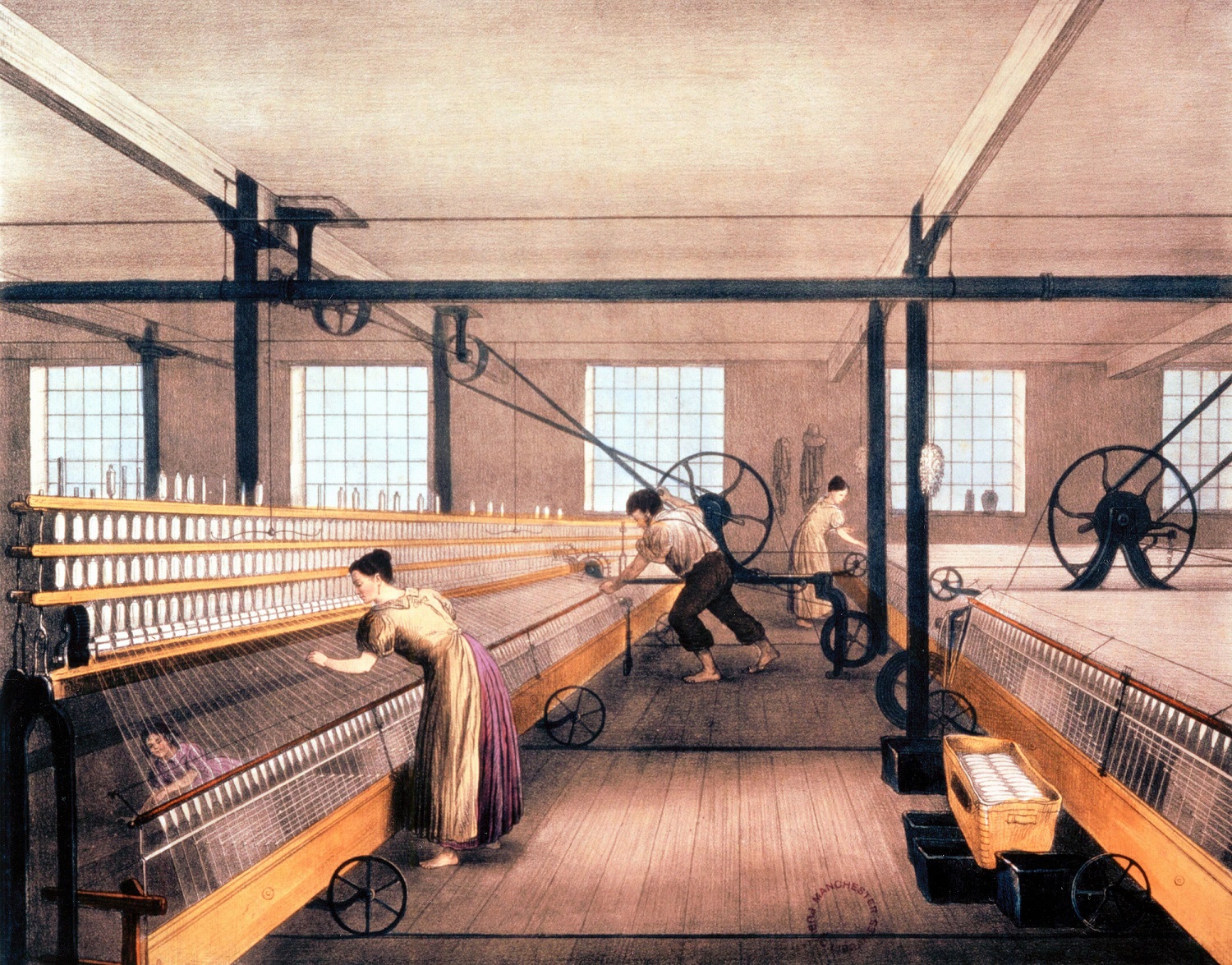Background
One of the hallmarks of the Industrial Revolution was the invention of machinery that could quickly mass produce items that were traditionally made by hand. The first major advances were in the textile industry, where the invention of water- and steam-powered spinning mules and looms made the production of threads and fabric much faster.
About the Document
This image shows the factory floor of a cotton mill in 1825. The spinning mules are spinning cotton fibers into thread that is being collected in the bobbins at the top of the machine. The women are overseeing the production of the thread and changing out bobbins as necessary. A basket of completed bobbins is displayed on the bottom right. The man in the center is in charge of monitoring the machinery to make sure it runs smoothly.
Under the spinning mule on the left, a small child is gathering the bits of fiber that fall from machines so they do not go to waste. These workers were called “mule scavengers.” Children as young as five could be hired for the job. The work was incredibly dangerous because a child’s clothing or hair could easily be caught in the spinning mechanisms. Children frequently lost fingers and hands to the machines, and some were killed.
Vocabulary
- bobbin: A cylinder or cone that holds thread.
- Industrial Revolution: The era of American history marked by the rise of factories and mechanical inventions that transformed daily life.
- loom: A tool used to weave thread into fabric.
- mill: Factory.
- spinning mule: The machine that spun fibers into thread.
- textile: Cloth.
Discussion Questions
- What kinds of jobs were necessary to keep a cotton mill running?
- What does this image reveal about life as a mill worker?
- Would you want to work as a mule scavenger? Why or why not?
Suggested Activities
- After examining this image, use this video to show your students what it would sound like to work in a cotton mill, and excerpts from “The Hours at Lowell” that describe what it felt like to be in the mills. Then ask students to write a short, first-person narration of life as a mill worker from the perspective of one of the people in the image.
- For a larger lesson about the lives of women factory workers during the Industrial Revolution, teach this document together with Rules for Mill Workers, Mill Girls, and In Their Own Words.
- For another example of children working during the Industrial Revolution, see Waged Industrial Work.
Themes
WORK, LABOR, AND ECONOMY







